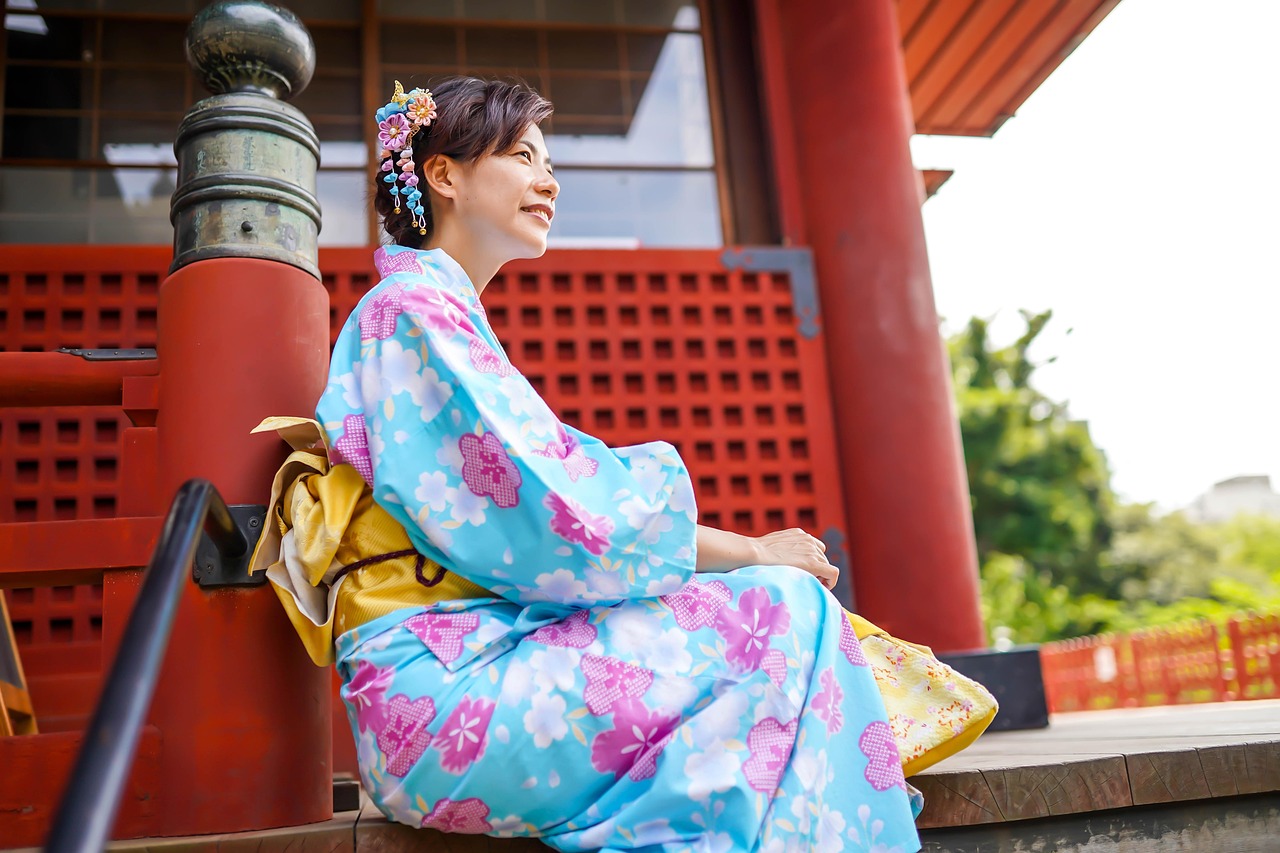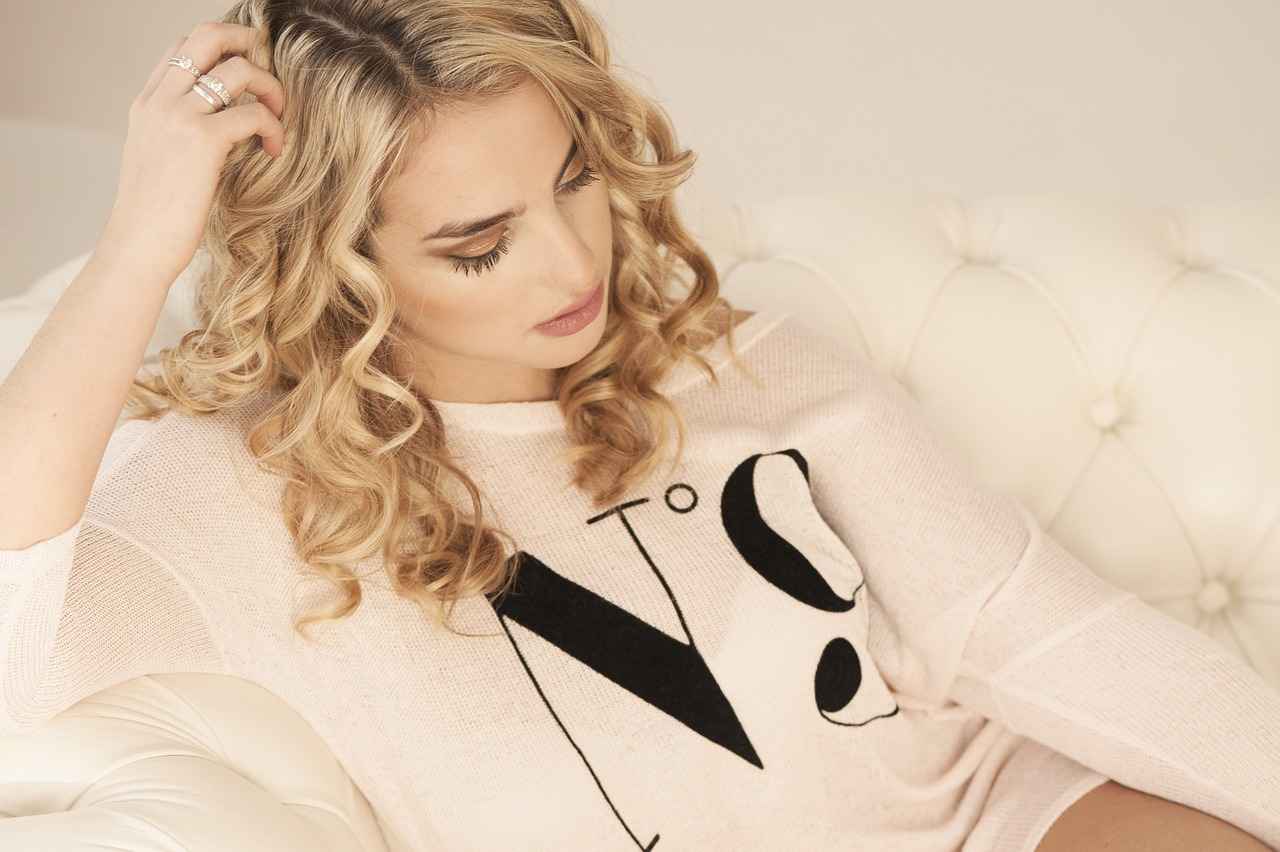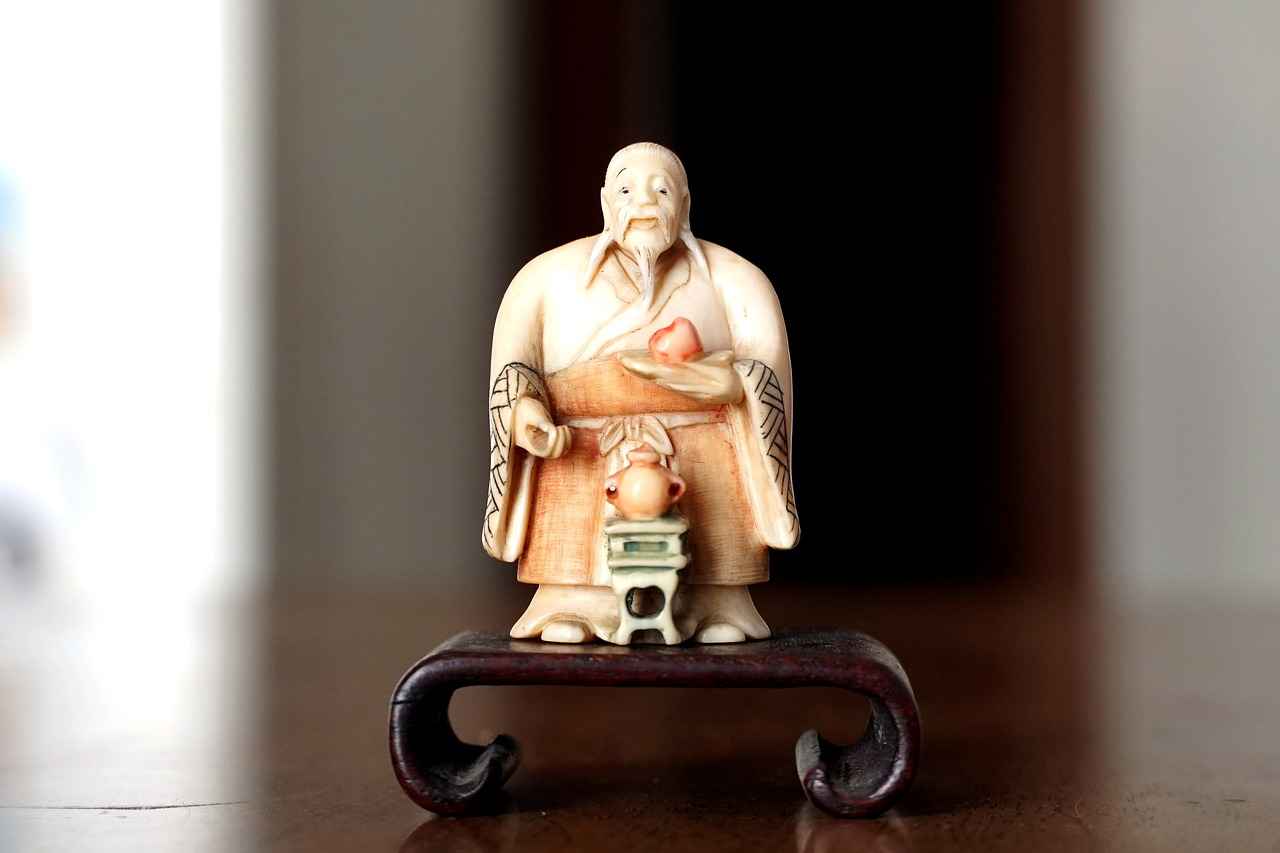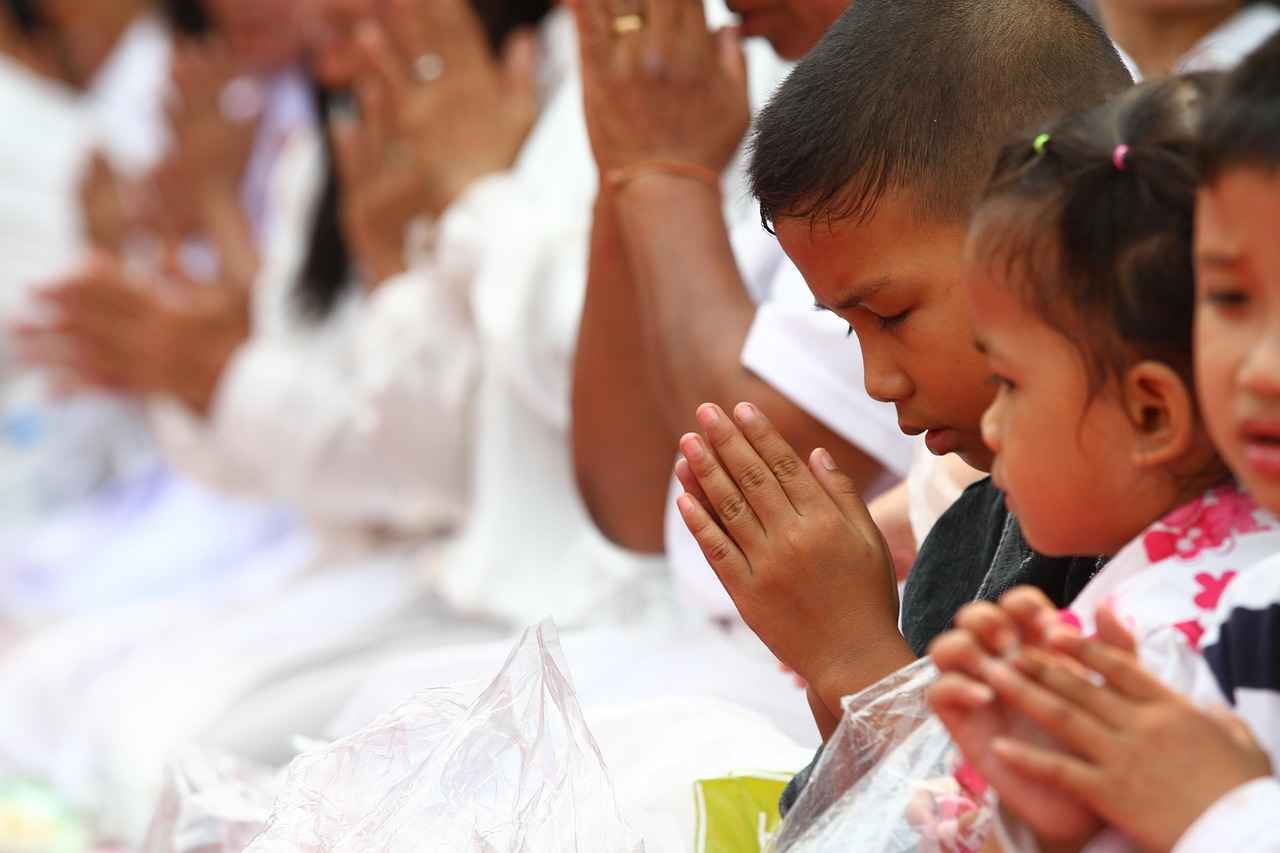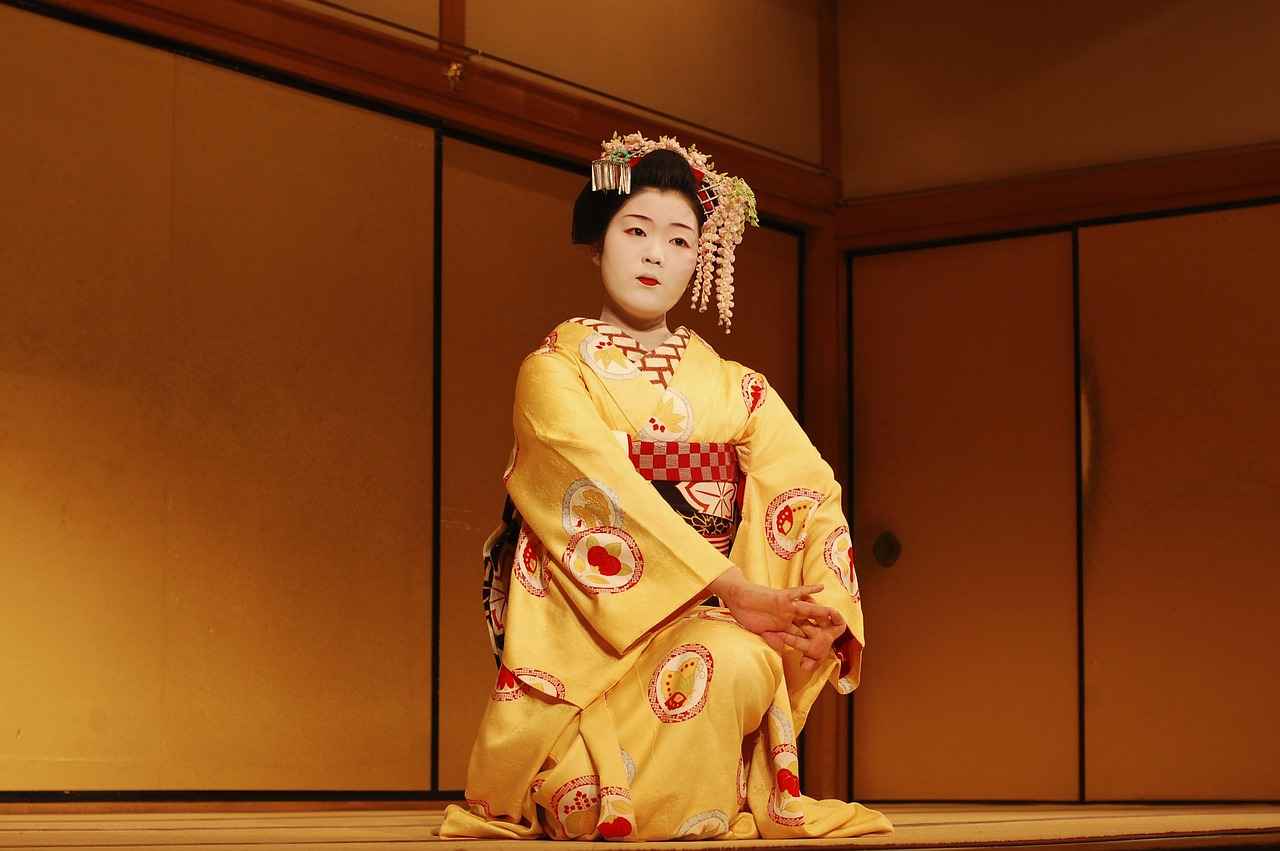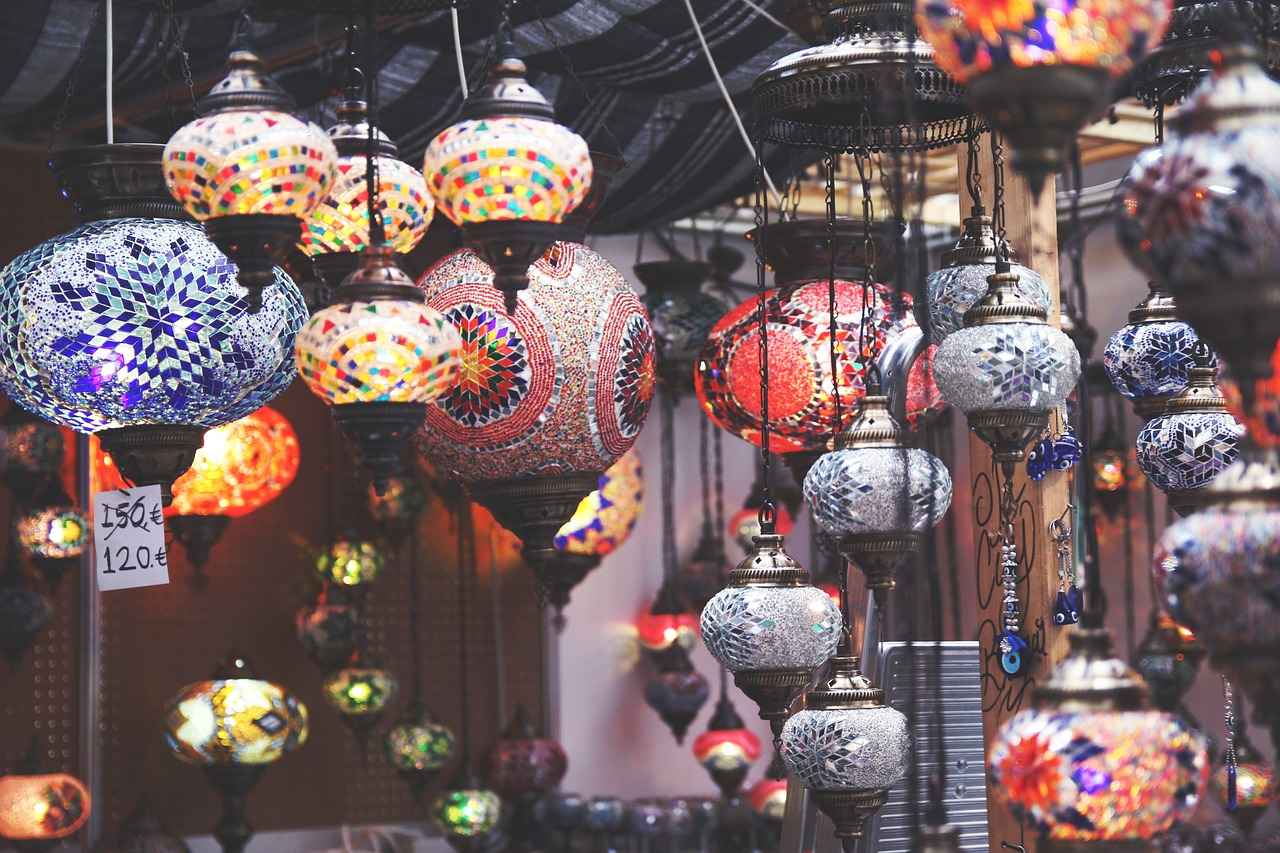Step into the vibrant world of kimono party outfits, where elegance and tradition come together to enhance your celebrations. This comprehensive guide will explore various styles, accessories, and essential tips to help you choose the perfect kimono for any event.
1. Understanding the Kimono
Kimonos are not just garments; they are a reflection of rich Japanese culture and history. Traditionally worn by both men and women, they come in numerous styles and fabrics, each carrying its own significance. From the formal furisode to the more casual yukata, understanding the types of kimonos available is the first step in selecting the right one for your occasion.
2. Choosing the Right Fabric
The fabric of your kimono can greatly affect its appearance and comfort. Common materials include:
- Silk: Luxurious and ideal for formal events.
- Cotton: Comfortable and perfect for casual gatherings.
- Synthetic: Affordable and easy to maintain.
3. Popular Kimono Styles for Parties
Different occasions call for different kimono styles. Here are some popular options:
- Long Kimonos: Perfect for elegant celebrations, offering grace and sophistication.
- Short Kimonos: A trendy choice for casual events, adding a modern touch.
4. Accessorizing Your Kimono
Enhance your kimono outfit with the right accessories. Key items include:
- Obi Belts: Essential for cinching the waist and adding flair.
- Footwear: Traditional sandals or modern shoes can complement your look.
- Jewelry: Simple pieces can elevate your outfit without overwhelming it.
5. Styling Tips for Different Body Types
Kimonos can flatter various body shapes. Here are tips for different silhouettes:
- Pear-Shaped: Opt for styles that accentuate the waist and flow over the hips.
- Athletic Builds: Choose kimonos with soft fabrics and flowing designs to create a more feminine silhouette.
6. Conclusion: Embracing the Kimono Tradition
Incorporating kimonos into your wardrobe allows you to celebrate both tradition and modern fashion. By understanding the various styles, fabrics, and accessories, you can confidently choose a kimono that suits your celebration perfectly.
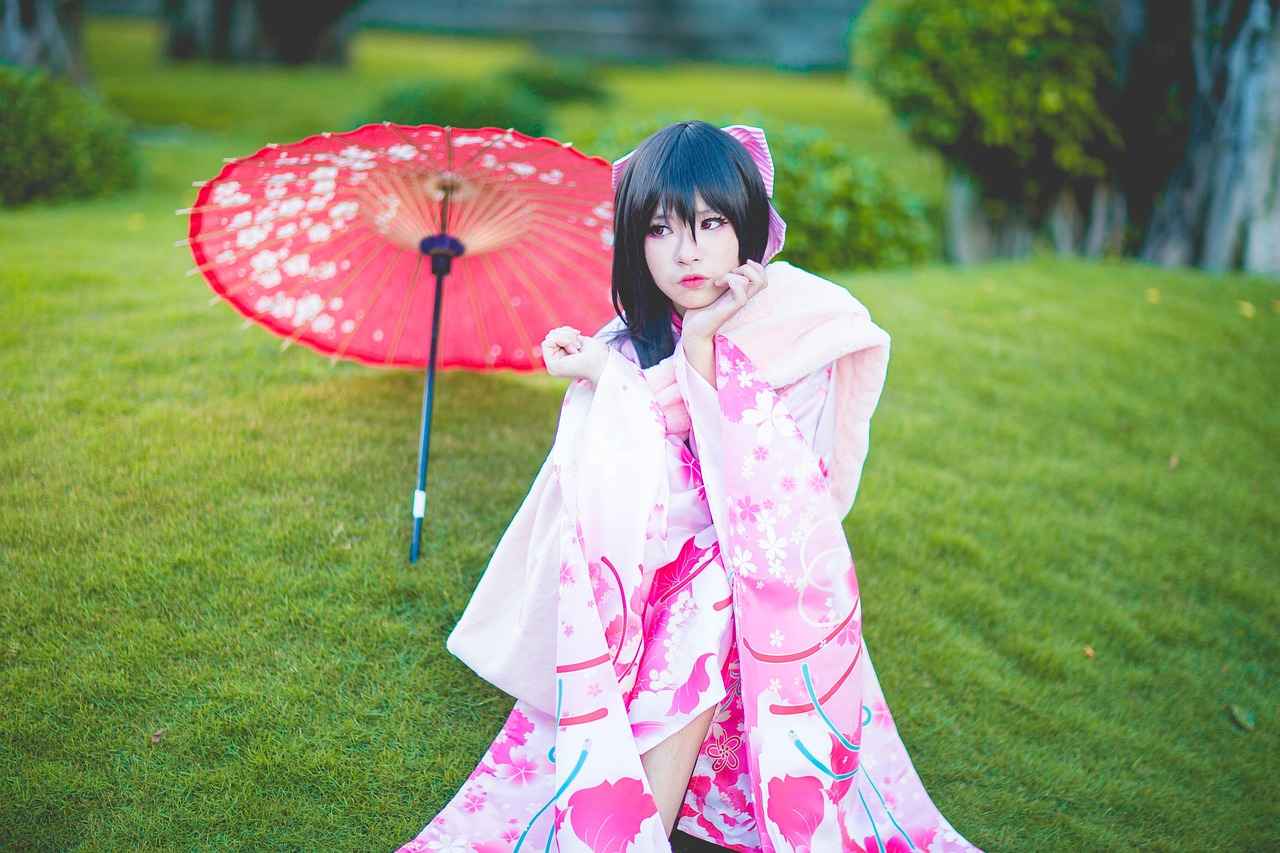
1. Understanding the Kimono
Kimonos are traditional Japanese garments that embody a rich history and cultural significance. These beautiful and versatile outfits have been worn for centuries, evolving through various styles and fabrics. This section explores the intricate details of kimonos, their origins, and the array of types available for different occasions.
The history of the kimono dates back to the Heian period (794-1185), where it was primarily worn by the aristocracy. Over time, kimonos became more accessible to the general population, adapting to different social classes and occasions. Today, they are worn during significant events such as weddings, festivals, and tea ceremonies, symbolizing not only tradition but also personal expression.
Cultural significance plays a crucial role in the kimono’s appeal. Each kimono is often adorned with specific colors and patterns that carry deep meanings. For instance, red is associated with happiness and good fortune, while blue symbolizes calmness and tranquility. This rich symbolism allows wearers to convey messages about their personality and aspirations.
There are various types of kimonos, each designed for specific occasions:
- Yukata: A lightweight cotton kimono typically worn in summer festivals.
- Furisode: A formal kimono with long sleeves, often worn by young unmarried women during special ceremonies.
- Tomesode: A formal kimono with shorter sleeves, usually worn by married women at weddings and other formal events.
- Hifu: A kimono-style jacket that can be worn over other outfits for added warmth and style.
Each style serves a unique purpose, allowing individuals to express their identity through the choice of kimono. As you delve deeper into the world of kimonos, you will discover not only their aesthetic beauty but also the rich tapestry of cultural traditions that they represent.

2. Choosing the Right Fabric
Choosing the Right Fabric for your kimono is essential, as it significantly impacts both the garment’s aesthetic appeal and comfort level. Different materials offer unique characteristics, catering to a variety of preferences and occasions. In this section, we will explore the most popular fabric options for kimonos, including silk, cotton, and synthetic materials, while highlighting their respective advantages and disadvantages.
| Fabric Type | Advantages | Disadvantages |
|---|---|---|
| Silk |
|
|
| Cotton |
|
|
| Synthetic Materials |
|
|
In summary, when selecting the right fabric for your kimono, consider factors such as occasion, comfort, and care requirements. Each fabric type offers distinct benefits that can enhance your overall experience. Whether you opt for the elegance of silk, the casual comfort of cotton, or the practicality of synthetic materials, understanding these options will help you make an informed choice for your next kimono.
2.1. Silk Kimonos
Silk kimonos are not just garments; they are a celebration of elegance and tradition. Renowned for their luxurious feel and exquisite appearance, these kimonos have become a staple for formal events, enhancing the wearer’s grace and style. In this section, we will explore the numerous benefits of silk kimonos, essential care tips to maintain their beauty, and innovative ways to style them for maximum impact.
- Luxurious Feel: The softness of silk provides unparalleled comfort against the skin.
- Timeless Elegance: Silk kimonos exude sophistication, making them ideal for weddings, galas, and other formal gatherings.
- Versatility: They can be styled in various ways, allowing for personal expression while adhering to traditional aesthetics.
- Breathability: Silk is a natural fiber that allows for airflow, making it suitable for different climates.
To ensure your silk kimono remains stunning for years to come, follow these care tips:
- Hand Wash: Always hand wash your silk kimonos in cold water with a gentle detergent.
- Avoid Direct Sunlight: Dry your kimono in the shade to prevent fading.
- Iron with Caution: Use a low heat setting and place a cloth between the iron and the silk to avoid burns.
Styling a silk kimono can elevate your outfit significantly. Here are some creative ideas:
- Layering: Pair your silk kimono with a fitted dress or tailored pants for a chic layered look.
- Accessorizing: Use a contrasting obi belt to cinch the waist, adding definition to your silhouette.
- Footwear: Choose elegant heels or traditional sandals to complement the overall aesthetic.
In conclusion, silk kimonos are a remarkable addition to any wardrobe, offering elegance and versatility. By following proper care instructions and exploring various styling options, you can create stunning outfits that leave a lasting impression at any event.
2.1.1. Care Tips for Silk
Caring for silk kimonos requires special attention to maintain their beauty and extend their lifespan. Silk is a delicate fabric that can easily be damaged if not handled properly. Below are essential tips to ensure your silk kimonos remain in pristine condition.
- Gentle Washing: Always hand wash your silk kimonos using cold water and a mild detergent specifically designed for silk. Avoid using bleach or harsh chemicals, as they can cause discoloration and damage the fibers.
- Avoid Machine Drying: Never put silk kimonos in the dryer. Instead, gently squeeze out excess water and lay them flat on a clean, dry towel to air dry. Hanging them can cause stretching and misshaping.
- Iron with Care: If your silk kimono is wrinkled, use a low heat setting on your iron. It’s best to iron the fabric while it’s slightly damp or place a thin cloth between the iron and the silk to prevent direct heat contact.
- Proper Storage: Store silk kimonos in a cool, dry place away from direct sunlight. Use padded hangers to maintain their shape and prevent creasing. Alternatively, you can fold them gently and place them in a breathable garment bag.
- Regular Cleaning: Have your silk kimonos professionally cleaned at least once a year, especially if they are worn frequently. This helps remove any dirt or oils that may accumulate over time.
- Spot Cleaning: For minor stains, act quickly. Blot the area with a clean, damp cloth and a small amount of mild detergent. Avoid rubbing, as this can damage the fabric.
By following these care tips, you can ensure that your silk kimonos remain beautiful and vibrant for years to come. Remember, investing time in proper care will protect your elegant garments and keep them looking their best for any occasion.
2.1.2. Styling Silk Kimonos
Styling silk kimonos can truly elevate your outfit, adding a touch of elegance and sophistication that is hard to match. These beautiful garments are not just traditional wear; they can be adapted to modern fashion trends, making them versatile for various occasions. Here, we explore creative ideas for pairing silk kimonos with accessories and other clothing items to create a chic look.
- Layering with Basics: Pair your silk kimono with a simple white t-shirt and high-waisted jeans. This combination allows the kimono to stand out while keeping the overall look casual yet stylish.
- Accessorizing: A statement belt can be an excellent addition. Opt for a wide obi belt or a sleek modern belt to cinch the waist, creating a flattering silhouette.
- Footwear Choices: When it comes to shoes, strappy sandals or elegant heels can enhance the outfit. For a more relaxed vibe, consider chic flats or mules.
- Jewelry: Keep jewelry minimalistic. A pair of dangly earrings or a delicate necklace can add just the right amount of sparkle without overwhelming the outfit.
- Mixing Patterns: Don’t shy away from mixing patterns. A floral silk kimono can be paired with striped or polka dot tops, adding an unexpected twist to your look.
Moreover, consider the length and cut of your kimono when styling. Longer kimonos work beautifully over fitted outfits, while shorter ones can complement flowy dresses or skirts. Always remember that the key to styling silk kimonos is to balance the elegance of the fabric with the rest of your outfit.
In conclusion, by thoughtfully pairing your silk kimono with the right accessories and clothing items, you can achieve a chic and sophisticated look that is perfect for any occasion.
2.2. Cotton Kimonos
Cotton kimonos are an excellent choice for casual gatherings, offering a blend of comfort, affordability, and versatility that makes them a staple in any wardrobe. Unlike their silk counterparts, cotton kimonos are lightweight and breathable, making them ideal for warm weather and relaxed settings.
When considering how to incorporate cotton kimonos into your everyday wardrobe, there are several factors to keep in mind:
- Layering: Cotton kimonos work beautifully as layering pieces. Pair them with a simple t-shirt and jeans for a chic, effortless look. They can also be thrown over a sundress for added style and comfort.
- Accessorizing: Enhance your outfit with accessories. A wide-brimmed hat or a statement necklace can elevate the look, while comfortable sandals or sneakers can keep it casual.
- Color and Patterns: Cotton kimonos come in a variety of colors and patterns. Opt for floral prints for a fresh, summery vibe, or choose solid colors for a more minimalist approach. Mixing and matching with different outfits is easy!
- Seasonal Versatility: Though perfect for summer, cotton kimonos can also transition into fall. Layer them over long-sleeve shirts and add a pair of boots for a cozy autumn look.
In terms of affordability, cotton kimonos are typically less expensive than those made from silk or other luxurious fabrics, making them accessible for everyone. They are easy to care for as well, often machine washable and durable, ensuring you get the most out of your investment.
In conclusion, cotton kimonos are not just a fashion statement; they are a practical addition to your wardrobe that combines style and comfort. Whether you’re heading to a casual brunch or a beach outing, a cotton kimono can enhance your look effortlessly.
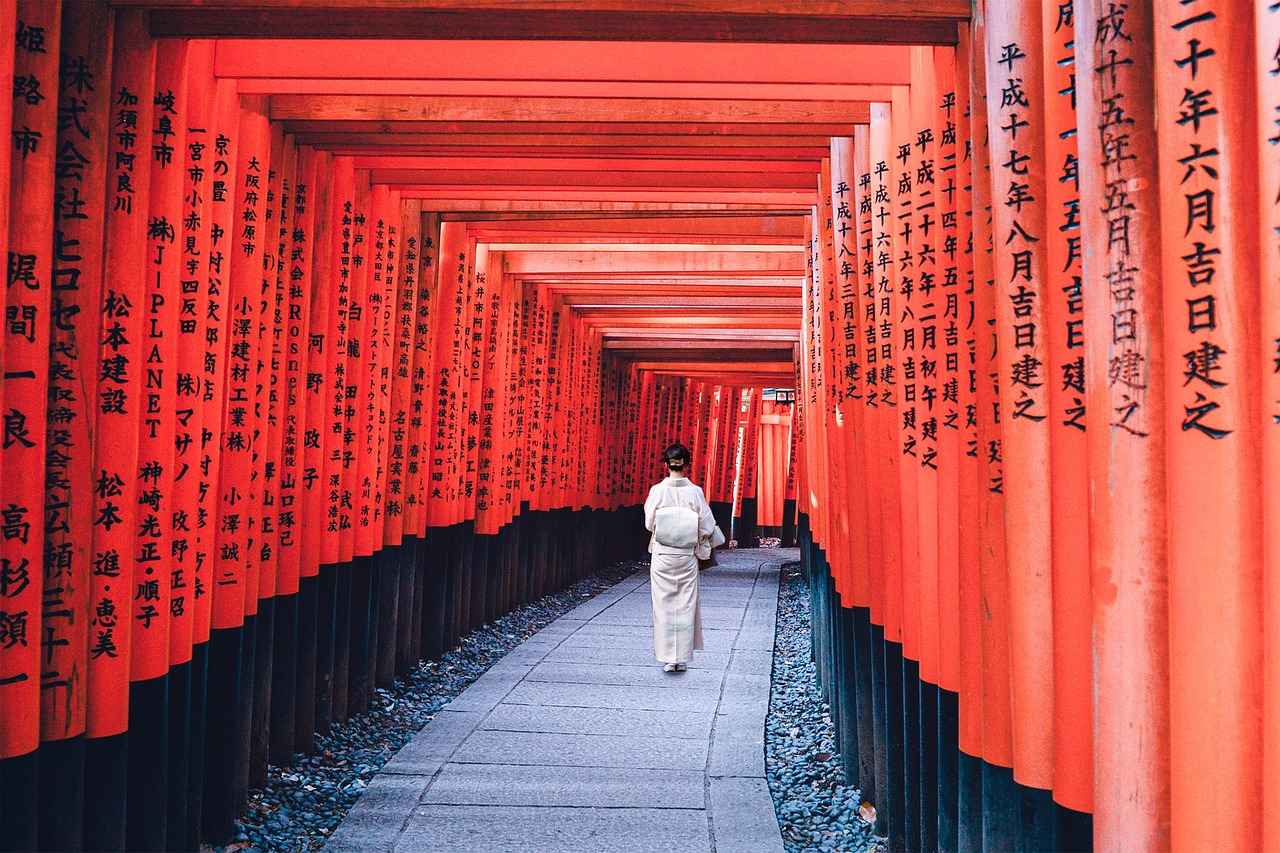
3. Popular Kimono Styles for Parties
The Best Kimono Party Outfits for Your Next Celebration
Explore the vibrant world of kimono party outfits, perfect for adding elegance and tradition to your celebrations. This guide covers styles, accessories, and tips for choosing the ideal kimono for your event.
From long to short kimonos, various styles suit different occasions. Here, we break down the most popular styles and when to wear them for maximum effect.
- Long Kimonos: Long kimonos exude elegance and sophistication. They are perfect for formal celebrations such as weddings, galas, or upscale dinner parties. Opt for luxurious fabrics like silk and intricate patterns to elevate your look.
- Short Kimonos: Short kimonos offer a modern twist on traditional styles. Ideal for casual gatherings or summer parties, they can be paired with jeans or shorts for a chic yet relaxed vibe. Look for vibrant colors and playful prints to stand out.
- Layered Kimonos: Layering is a trendy way to wear kimonos, especially during transitional seasons. Pair a lightweight kimono over a fitted dress or a tank top and trousers for a stylish look that can be adjusted for comfort and temperature.
- Printed Kimonos: Bold prints can make a statement at any party. Floral, geometric, or abstract designs can add a fun element to your outfit. Choose prints that resonate with your personality and the theme of the event.
When selecting a kimono for a party, consider the occasion and your personal style. Accessorizing with the right obi belt and footwear can further enhance your look. Remember, the key is to feel comfortable while showcasing the beauty of this traditional garment.
In conclusion, whether you choose a long, short, or printed kimono, each style offers a unique way to celebrate your individuality while embracing the rich heritage of kimono fashion.
3.1. Long Kimonos
Long kimonos are a stunning representation of elegance and sophistication, making them a favored choice for various occasions. Their flowing design not only adds a touch of grace but also provides versatility, allowing them to be styled for both formal celebrations and casual outings.
When considering how to wear a long kimono, it’s essential to understand its styling potential. For formal events such as weddings or galas, opt for kimonos made from luxurious fabrics like silk or satin. These materials drape beautifully and can be paired with a chic dress or tailored pants, enhancing your overall look. Adding a statement obi belt can further accentuate your waist, creating a flattering silhouette.
For casual outings, long kimonos can be effortlessly styled over a simple t-shirt and jeans. This creates a relaxed yet fashionable appearance, perfect for brunches or casual gatherings. Choose kimonos with vibrant patterns or lighter fabrics to keep the look fresh and lively. Accessories like chunky sandals or a stylish hat can complete the ensemble, adding a personal touch.
One of the best features of long kimonos is their ability to transition between different settings. For instance, a long kimono can be worn over a swimsuit at the beach, providing both style and coverage. Alternatively, it can be layered over a fitted dress for a night out, showcasing its adaptability.
In conclusion, long kimonos are not just a fashion statement; they embody a rich cultural heritage while offering modern versatility. Whether you’re dressing up for a formal occasion or keeping it casual, long kimonos can enhance your wardrobe with elegance and style.
| Occasion | Styling Tips |
|---|---|
| Formal Events | Pair with a silk dress and a statement obi belt. |
| Casual Outings | Layer over jeans and a t-shirt for a relaxed look. |
| Beach Day | Wear over a swimsuit for a stylish cover-up. |
3.2. Short Kimonos
Short kimonos have emerged as a fashionable alternative to traditional long styles, combining modern aesthetics with cultural heritage. These chic garments are not only versatile but also perfect for various occasions, making them a staple in contemporary wardrobes.
One of the main appeals of short kimonos is their trendy appeal. They can effortlessly elevate any outfit, whether you’re dressing up for a party or going for a casual look. The shorter length allows for more freedom of movement, making them ideal for social gatherings where you want to feel comfortable yet stylish.
When considering the best occasions to wear short kimonos, think about:
- Casual Outings: Pair a short kimono with jeans or shorts for a laid-back yet fashionable look.
- Summer Parties: The lightweight fabric of short kimonos makes them perfect for outdoor events during warmer months.
- Beach Days: Use a short kimono as a cover-up over your swimsuit for a chic beach look.
- Brunch with Friends: A stylish short kimono can add a touch of elegance to your brunch outfit.
To style a short kimono effectively, consider layering it over basic tops or dresses. This layering technique not only adds dimension to your outfit but also allows you to showcase the intricate patterns and designs often found in kimono fabrics. Accessories such as statement earrings or a wide-brimmed hat can further enhance your look.
In conclusion, short kimonos are a versatile addition to any wardrobe, offering a modern twist on traditional styles. Their ability to blend comfort with elegance makes them suitable for a variety of occasions, ensuring you look fashionable no matter the event.
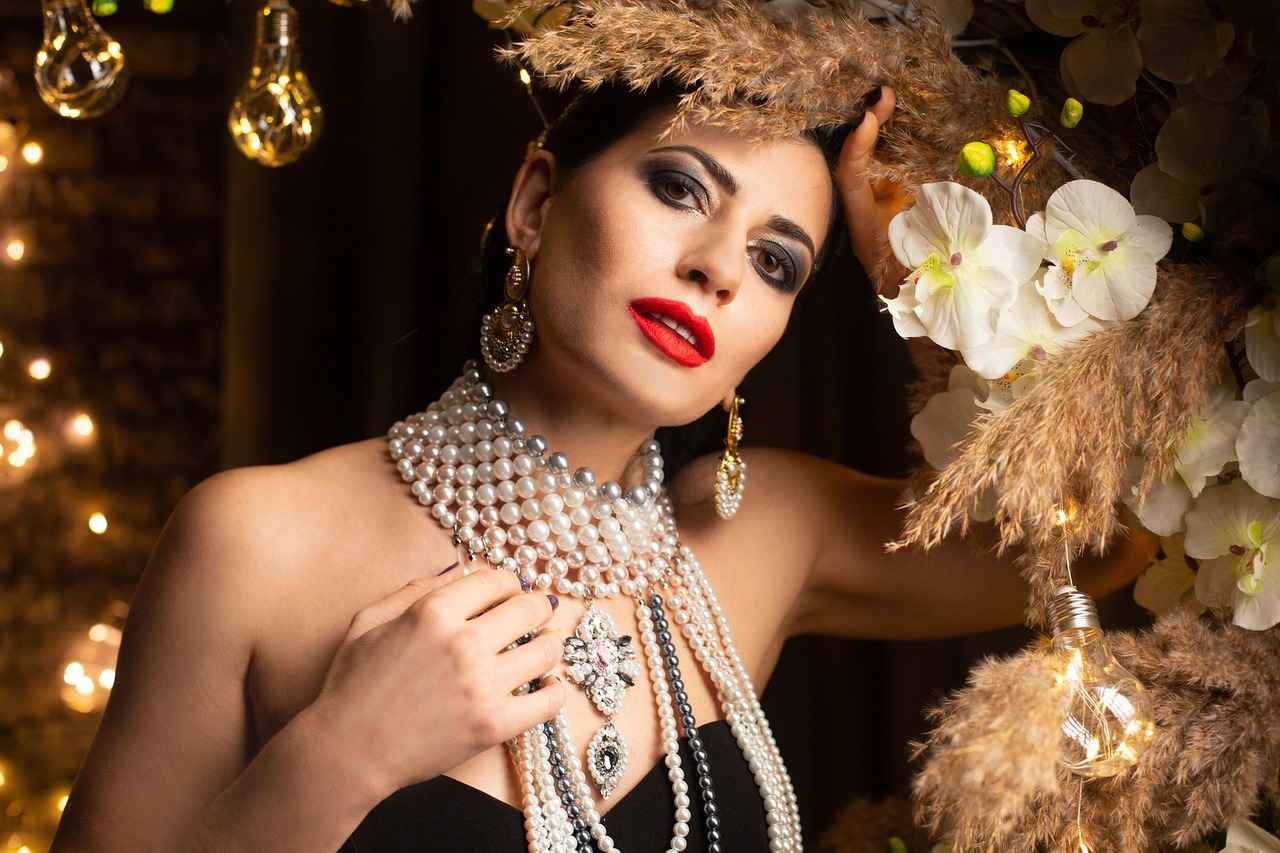
4. Accessorizing Your Kimono
Accessorizing Your Kimono
Accessorizing your kimono is essential to elevate your overall look and showcase your personal style. The right accessories not only enhance the beauty of your kimono outfit but also reflect your individuality. In this section, we will explore the best accessories, including obi belts, footwear, and jewelry, to complete your ensemble.
| Accessory Type | Description | Styling Tips |
|---|---|---|
| Obi Belts | Obi belts are wide sashes worn around the waist, crucial for securing the kimono. | Choose an obi that contrasts or complements your kimono’s color for a balanced look. |
| Footwear | Traditional footwear includes geta and zori, while modern options can also be considered. | Opt for comfortable footwear that matches the formality of your kimono. |
| Jewelry | Jewelry can add a touch of elegance and personality to your outfit. | Keep it simple; opt for delicate pieces that do not overpower the kimono. |
Choosing the Right Obi Belt
The obi belt is a crucial accessory that can dramatically alter your silhouette. When selecting an obi, consider the fabric and design. A vibrant, patterned obi can add a pop of color, while a simpler belt can create a more streamlined look. Experiment with different tying styles, such as the traditional taiko musubi or the more casual haneri, to find what suits you best.
Footwear Options
Your choice of footwear can make or break your kimono outfit. Traditional options like geta or zori are perfect for maintaining authenticity. However, modern alternatives like stylish flats or low-heeled sandals can offer comfort without sacrificing elegance. Ensure your footwear complements your kimono’s color and style for a cohesive look.
Jewelry Selection
When it comes to jewelry, less is often more. Choose pieces that enhance your outfit without overwhelming it. Delicate earrings or a simple bracelet can add a touch of sophistication. Consider traditional Japanese jewelry styles, such as kanzashi hairpins, which can beautifully accentuate your hairstyle and overall appearance.
In conclusion, the right accessories can transform your kimono outfit from simple to stunning. By carefully selecting your obi, footwear, and jewelry, you can create a harmonious and stylish look that pays homage to tradition while showcasing your personal flair.
4.1. Choosing the Right Obi Belt
Choosing the Right Obi Belt is essential for enhancing the overall look of your kimono. This accessory not only adds a touch of elegance but also helps define your silhouette, making it a crucial element in your outfit. Here’s how to select the perfect obi belt to complement your kimono.
- Consider the Fabric: The material of your obi belt should harmonize with the fabric of your kimono. For silk kimonos, a silk obi is ideal for a cohesive look, while cotton kimonos can pair well with a cotton or synthetic obi.
- Choose the Right Width: Obi belts come in various widths. A wider obi can create a more dramatic effect, while a narrower one offers a subtle accent. The choice should depend on your body type and the style of the kimono.
- Color Coordination: Select colors that complement or contrast with your kimono. A bold color can make a statement, while a muted tone can create a more sophisticated appearance. Consider the color wheel for guidance.
- Patterns and Designs: The design of your obi can add character to your outfit. Floral patterns can evoke a traditional feel, while geometric designs can give a modern twist. Ensure the pattern aligns with the occasion and your personal style.
- Functionality: Some obi belts are designed for ease of wear, featuring adjustable lengths or pre-tied options. If you’re new to wearing kimonos, these can be practical choices.
When selecting your obi, it’s important to try on different styles and see how they feel. A well-chosen obi belt not only enhances your kimono but also boosts your confidence, allowing you to embrace the beauty of this traditional garment.
4.2. Footwear Options
Footwear Options
Choosing the right footwear is essential for completing your kimono outfit. The right shoes not only enhance your overall look but also ensure comfort throughout your event. Here, we explore various options that cater to both traditional and modern styles, ensuring you find the perfect pair for any occasion.
| Footwear Type | Description | Best For |
|---|---|---|
| Geta | Traditional wooden sandals that elevate the wearer, providing a unique aesthetic. | Formal events and traditional ceremonies. |
| Zori | Flat sandals typically made of rice straw or fabric, offering comfort and style. | Casual gatherings and summer festivals. |
| Wedges | Modern footwear option that combines height with stability, perfect for adding a contemporary twist. | Outdoor events and parties. |
| Flats | Simple and versatile shoes that provide comfort without sacrificing style. | Everyday wear and casual outings. |
| Heels | Elevated shoes that can add elegance and sophistication to your kimono ensemble. | Formal occasions and evening events. |
When selecting footwear, consider the occasion and comfort. Traditional options such as geta or zori are perfect for maintaining the authenticity of your outfit, while modern choices like wedges or flats can provide a contemporary flair. It’s essential to choose shoes that complement your kimono’s colors and patterns, ensuring a cohesive look.
Ultimately, the right footwear can elevate your kimono experience, allowing you to celebrate in style while feeling comfortable and confident. Remember to also consider the venue and weather conditions when making your choice, as these factors can significantly influence your comfort throughout the day.
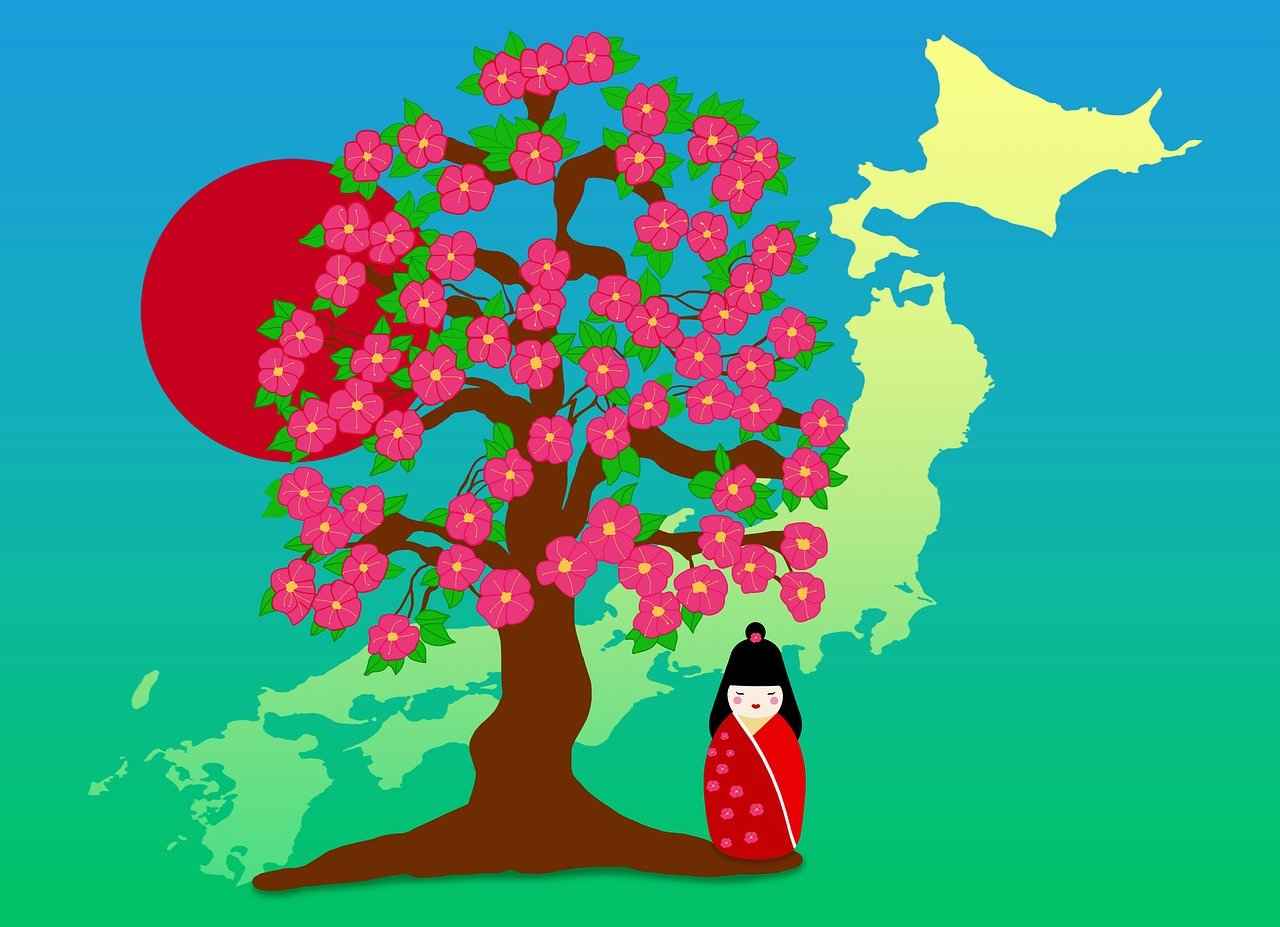
5. Styling Tips for Different Body Types
Kimonos can be a stunning addition to your wardrobe, offering versatility and elegance. However, to truly shine in a kimono, it’s essential to consider your body type. This section provides tailored advice on how to choose and wear kimonos based on your unique body shape, ensuring you feel confident and stylish.
- Pear-Shaped Bodies: If you have a pear-shaped figure, focus on kimonos that draw attention to your upper body. Look for styles with bold patterns or embellishments around the shoulders. A long kimono that flares slightly at the bottom can also create a balanced silhouette.
- Apple-Shaped Bodies: For those with an apple shape, opt for kimonos that cinch at the waist to create definition. Empire waist kimonos or styles with a tie belt can help accentuate your figure. Avoid overly fitted designs that may add bulk to the midsection.
- Athletic Builds: If you have a more athletic build, consider kimonos with flowing fabrics and draped designs to add softness. Look for styles with ruffles or layering to create a more feminine silhouette. Adding a statement obi can also enhance your waistline.
- Hourglass Figures: Embrace your curves with kimonos that highlight your waist. A kimono with a defined waistline or a wrap style can enhance your hourglass shape beautifully. Choose fabrics that drape well to accentuate your figure without overwhelming it.
- Petite Frames: If you are petite, opt for shorter kimonos that won’t overwhelm your frame. Lightweight fabrics and tailored cuts can help elongate your appearance. Avoid overly long kimonos that can make you appear shorter.
When styled correctly, kimonos can flatter any body type, making you feel both comfortable and chic. Remember, the key lies in understanding your shape and choosing the right styles that complement your unique features.
5.1. For Pear-Shaped Bodies
Pear-shaped bodies are characterized by a smaller bust and wider hips, creating a beautiful silhouette that can be enhanced with the right kimono styles. When selecting kimonos, it’s essential to choose designs that not only flatter your figure but also accentuate your natural curves.
- Opt for A-Line Cuts: Kimonos that feature an A-line shape can help balance your proportions. These styles gently flare out from the waist, providing a flattering silhouette that draws attention away from the hips.
- Choose Longer Lengths: Longer kimonos can elongate your frame and create a more streamlined look. Consider styles that reach mid-calf or ankle length, as they can enhance your overall appearance.
- Focus on Patterns and Colors: Darker colors on the bottom half can create a slimming effect. Pair this with vibrant or patterned kimonos on top to draw attention upwards, highlighting your face and neckline.
- Consider Belted Styles: A kimono with a waist tie or belt can define your waist and create an hourglass shape. This is particularly effective in drawing attention to your waist while allowing the fabric to flow over your hips.
- Layer Smartly: Layering with a fitted top underneath your kimono can help create a balanced look. This combination can enhance your curves without overwhelming your figure.
In summary, when selecting kimonos for a pear-shaped body, it’s essential to focus on styles that enhance your natural curves while providing balance. By choosing the right cuts, colors, and accessories, you can create stunning outfits that celebrate your unique shape and make you feel confident at any event.
5.2. For Athletic Builds
For Athletic Builds
Athletic builds often possess a strong, toned physique that can sometimes be challenging to dress in a way that feels both flattering and feminine. Fortunately, kimonos offer a fantastic solution by introducing a sense of softness and grace to your overall look. The right styles and cuts can enhance your figure while providing comfort and elegance.
Key Styles for Athletic Builds
- Wrap Kimonos: These kimonos feature a tie closure that allows for adjustable fit, creating a defined waistline that adds curves.
- Long, Flowing Kimonos: Opt for kimonos that are longer in length, as they drape beautifully and create an elongated silhouette.
- Kimono Jackets: Shorter kimono jackets can be layered over fitted outfits, providing a chic contrast that softens the overall appearance.
Fabric Choices
When selecting a kimono, the fabric plays a crucial role in how it falls on your body. Lightweight materials like chiffon or silk can create a delicate, flowing effect, while cotton offers a more structured look. Choose fabrics that drape well and avoid stiff materials that can add bulk.
Color and Patterns
Utilizing colors and patterns can also enhance your feminine silhouette. Soft pastels and floral prints can introduce a gentle touch, while darker shades can create a slimming effect. Consider kimonos with strategic patterns that draw attention to your waist or neckline.
Accessorizing for Balance
To complete your look, consider incorporating accessories that complement your kimono. A statement belt can cinch the waist of a wrap kimono, while delicate jewelry can add a touch of elegance. Footwear choices, such as heeled sandals or stylish flats, can further elevate your outfit.
In summary, kimonos are a versatile addition to the wardrobes of those with athletic builds. By selecting the right styles, fabrics, and accessories, you can create a beautiful and feminine silhouette that enhances your natural physique.

6. Kimono Care and Maintenance
Proper care ensures your kimono remains beautiful for years. Maintaining the quality of your kimono is essential to preserve its beauty and cultural significance. This section covers the key aspects of washing, storing, and maintaining your kimonos to ensure they stand the test of time.
When it comes to washing your kimono, gentleness is key. Here are some important steps to follow:
- Hand Washing: Always opt for hand washing over machine washing. Use cold water and a mild detergent specifically designed for delicate fabrics.
- Spot Cleaning: For minor stains, use a soft cloth and a gentle stain remover. Avoid scrubbing, as this can damage the fabric.
- Drying: Never wring out your kimono. Instead, lay it flat on a clean towel to absorb excess water, then hang it to air dry away from direct sunlight.
Proper storage is crucial to prevent wrinkles and fabric damage. Consider the following tips:
- Use a Kimono Bag: Store your kimonos in breathable cotton or silk bags to protect them from dust and light.
- Hang or Fold: Depending on the fabric, you can either hang your kimono on a padded hanger or fold it neatly. Avoid using wire hangers as they can cause creases.
- Climate Control: Keep your kimonos in a cool, dry place. Avoid areas with high humidity or direct heat sources, as these can damage the fabric.
To keep your kimono looking its best, regular maintenance is essential:
- Check for Damage: Regularly inspect your kimono for any signs of wear, such as loose threads or small tears, and address these issues promptly.
- Professional Cleaning: For deep cleaning, consider taking your kimono to a professional cleaner who specializes in delicate fabrics.
- Rotate Usage: If you own multiple kimonos, rotate their use to prevent excessive wear on a single piece.
By following these care and maintenance tips, you can ensure that your kimono remains a cherished part of your wardrobe for many years to come. Remember, every kimono tells a story, and with the right care, you can keep its story alive.
6.1. Washing Techniques
Washing Techniques for Kimonos
Washing kimonos requires special techniques to ensure they remain in pristine condition while avoiding any potential damage. The delicate nature of kimono fabrics, such as silk and cotton, necessitates careful handling during the washing process. This guide provides step-by-step instructions tailored to different fabric types.
- 1. Silk Kimonos
- Use cold water to prevent shrinkage and color fading.
- Add a gentle detergent specifically designed for silk.
- Hand wash gently; avoid wringing or twisting the fabric.
- Rinse thoroughly with cold water and hang to dry in a shaded area.
- 2. Cotton Kimonos
- Machine wash on a gentle cycle with cold water.
- Use a mild detergent to maintain fabric integrity.
- Dry on a low heat setting or hang to air dry to prevent shrinking.
- 3. Synthetic Kimonos
- Wash in cold water with a regular detergent.
- Machine wash on a gentle cycle to avoid damage.
- Dry on low heat or air dry, as high temperatures can damage synthetic fibers.
In addition to the washing techniques, it is crucial to spot clean any stains immediately with a damp cloth and mild soap. This prevents the stain from setting and keeps your kimono looking fresh.
Lastly, always refer to the care label on your kimono for specific washing instructions, as some may have unique requirements based on their fabric composition.
By following these care tips, you can ensure that your kimonos remain beautiful and wearable for many years to come.
6.2. Storage Tips
Storing kimonos correctly is essential for preserving their beauty and longevity. Kimonos, with their intricate designs and delicate fabrics, require special care when it comes to storage. Proper storage techniques can help prevent wrinkles and fabric damage, ensuring that your kimonos remain in top condition for years to come.
Here are some effective storage solutions to consider:
- Choose the Right Hanger: Use wide, padded hangers to support the weight of the kimono without causing distortion. Avoid using thin plastic hangers, as they can create unsightly creases.
- Store in a Cool, Dry Place: Kimonos should be kept in a cool, dry environment away from direct sunlight. Excessive heat and humidity can lead to mold growth and fading colors.
- Use Garment Bags: For long-term storage, consider using breathable garment bags made of cotton or muslin. These materials allow the fabric to breathe while protecting it from dust and pests.
- Avoid Folding: If possible, hang your kimonos instead of folding them. If you must fold them, do so gently and place acid-free tissue paper between the folds to minimize creasing.
- Regular Maintenance: Periodically check your stored kimonos for any signs of damage or pests. Air them out every few months to prevent mustiness and ensure they remain fresh.
By following these storage tips, you can maintain the beauty and integrity of your kimonos, allowing you to enjoy them for many celebrations to come. Remember, proper care and storage are key to preserving the elegance of these timeless garments.
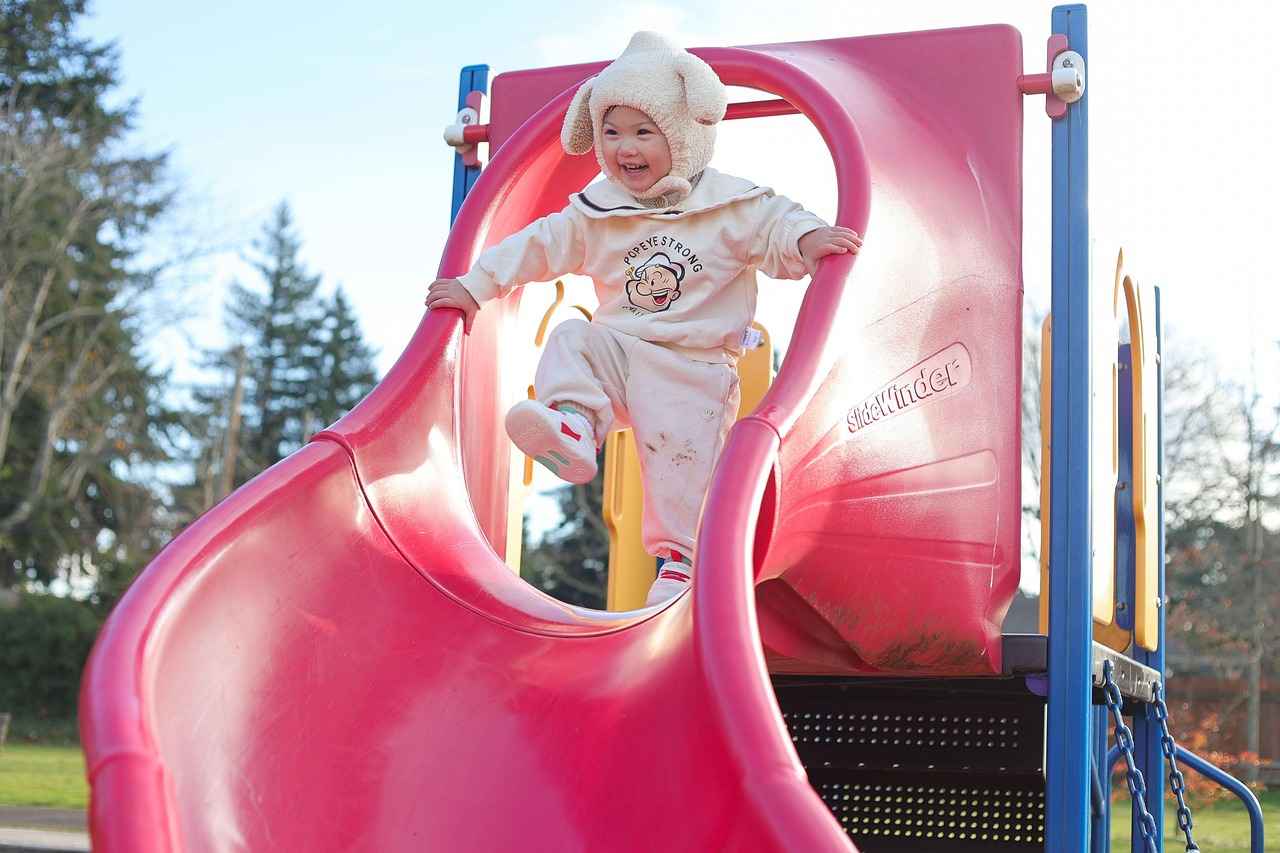
7. Where to Buy Kimonos
Finding the perfect kimono can be a delightful experience, and knowing where to shop is key to this journey. This section highlights the best places to shop for kimonos, both online and in-store, ensuring you find the ideal piece that resonates with your style and occasion.
Online shopping has revolutionized the way we purchase kimonos, offering a vast selection that ranges from traditional to contemporary styles. Here are some top online retailers:
- Amazon: A marketplace that features a wide variety of kimonos, including affordable options and designer pieces.
- Etsy: Perfect for unique, handmade kimonos crafted by independent artisans, allowing you to find something truly special.
- Kimono House: Specializes in authentic kimonos and accessories, providing detailed descriptions and sizing guides to aid your selection.
- Uniqlo: Offers modern interpretations of the kimono, blending traditional aesthetics with contemporary fashion.
Shopping at local boutiques can enhance your kimono experience. Here are some benefits:
- Personalized Service: Store owners often provide valuable insights and styling tips to help you choose the right kimono.
- Unique Selections: Many boutiques carry exclusive pieces that you won’t find elsewhere, allowing you to stand out.
- Support Local Businesses: Purchasing from local shops contributes to your community and helps keep traditional craft alive.
Attending kimono markets and cultural festivals can be an exciting way to shop. These events often feature:
- Wide Selections: Vendors showcase various styles and fabrics, providing an immersive shopping experience.
- Workshops: Some events may offer workshops on how to wear and style kimonos, enhancing your knowledge and appreciation.
In conclusion, whether you prefer the convenience of online shopping or the charm of local boutiques and markets, there are numerous ways to find the perfect kimono. Embrace the journey of exploration, and you’ll surely discover a piece that you will cherish for years to come.
7.1. Online Retailers
Online Retailers have revolutionized the way we shop for kimonos, offering a vast selection that caters to all tastes and preferences. With just a few clicks, you can explore an extensive range of styles, fabrics, and colors from the comfort of your home.
When shopping for kimonos online, consider the following popular retailers known for their quality and variety:
- Amazon: A go-to for many, Amazon features a wide array of kimonos from various brands, ensuring you can find something that fits your style and budget.
- Etsy: If you’re looking for unique, handmade kimonos, Etsy is the perfect platform. Many artisans offer custom designs that you won’t find elsewhere.
- ASOS: Known for its trendy fashion, ASOS provides a selection of modern kimonos that blend traditional elements with contemporary style.
- Revolve: This retailer focuses on high-end fashion, offering luxurious kimonos that are perfect for special occasions.
- Nordstrom: For those seeking quality and designer options, Nordstrom carries a curated selection of kimonos that emphasize elegance and sophistication.
When choosing an online retailer, pay attention to customer reviews and ratings to ensure you are purchasing a quality product. Additionally, consider the return policy, as this can be crucial if the item does not meet your expectations.
In conclusion, online shopping for kimonos not only provides convenience but also opens up a world of options. Whether you prefer a traditional look or a modern twist, these retailers are sure to have something that will suit your needs and enhance your wardrobe.
7.2. Local Boutiques
Discovering Unique Kimonos at Local Boutiques
Shopping at local boutiques offers a treasure trove of unique finds that can elevate your wardrobe, especially when it comes to kimonos. Unlike mass-produced garments, these boutiques curate a selection that reflects the local culture and artistry, ensuring that each piece tells its own story.
One of the primary benefits of shopping at local boutiques is the opportunity to find one-of-a-kind kimonos. Each boutique often stocks exclusive designs that you won’t find in larger retail chains. This exclusivity allows you to express your personal style and stand out at any event. Additionally, many boutique owners are passionate about their craft and can provide insights into the history and significance of the kimonos they sell, enhancing your shopping experience.
Moreover, supporting local businesses contributes to the community’s economy. When you purchase from a local boutique, you are helping to sustain small businesses and promote local artisans. This not only fosters a sense of community but also encourages the preservation of traditional crafts and techniques that may be lost in mass production.
Shopping locally also allows you to try on kimonos before making a purchase. This is particularly important for kimonos, as the fit can vary significantly based on the style and fabric. By trying on different pieces, you can find the perfect kimono that complements your body shape and personal style.
In conclusion, local boutiques are invaluable for anyone looking to discover unique kimonos. They offer a blend of exclusivity, cultural significance, and community support that enhances the shopping experience. So, the next time you are in search of a special kimono for a celebration, consider exploring your local boutiques for those hidden gems.
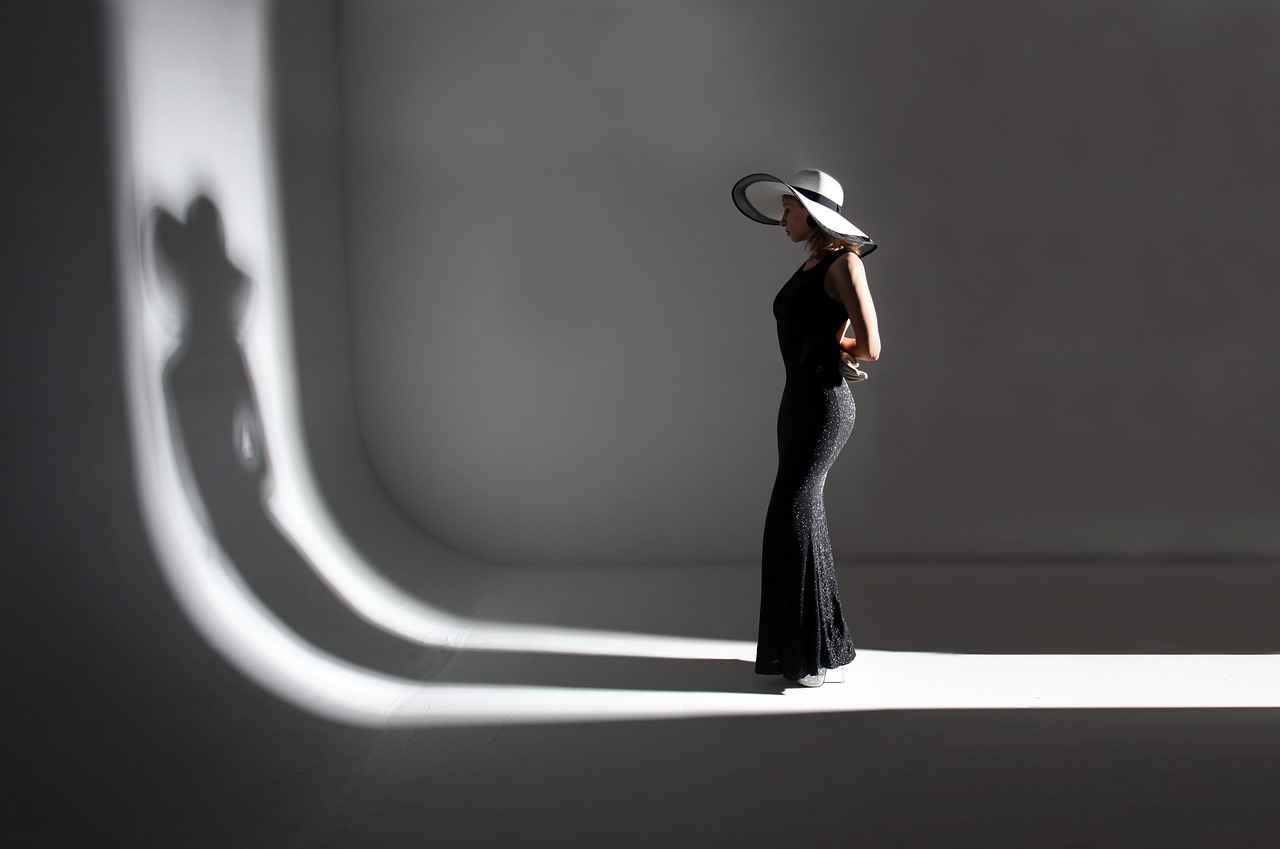
8. Incorporating Kimonos into Modern Fashion
Kimonos are not merely relics of tradition; they have seamlessly transitioned into the realm of modern fashion, proving their versatility and appeal across various occasions. This section will explore how to incorporate kimonos into contemporary wardrobes, making them suitable for both casual and formal settings.
In today’s fashion landscape, kimonos can be styled in numerous ways to create unique looks. Here are some effective strategies:
- Layering: Kimonos work wonderfully as layering pieces. Pair a lightweight kimono with a basic tee and jeans for a chic, laid-back outfit. This combination is perfect for brunches or casual outings.
- Mixing Styles: Combine traditional kimonos with modern pieces. For instance, wear a long kimono over a fitted dress or a crop top and high-waisted trousers. This blend of styles adds a contemporary twist to your ensemble.
- Accessorizing: The right accessories can elevate your kimono look. Consider adding a statement belt to cinch the waist or bold jewelry to create a focal point. Footwear options can range from traditional sandals to trendy ankle boots, depending on the occasion.
- Color Coordination: When styling kimonos, pay attention to color palettes. Choose kimonos with vibrant patterns for a lively look, or opt for solid colors for a more understated elegance. This allows for versatility in pairing with various outfits.
Furthermore, kimonos can shine at formal events. For weddings or gala dinners, select silk or satin kimonos adorned with intricate patterns. Pair them with elegant heels and refined jewelry to create a sophisticated yet unique appearance.
In conclusion, kimonos are a fantastic way to infuse tradition into modern fashion. By experimenting with different styles and accessories, you can create outfits that are not only stylish but also reflect your personal taste. Embrace the kimono and enjoy the fusion of cultural heritage with contemporary flair.
8.1. Casual Outfits
Kimonos have become a staple in modern fashion, effortlessly elevating casual outfits while adding a touch of elegance and flair. They are versatile pieces that can be paired with various clothing items, making them ideal for both relaxed and semi-formal occasions. Here are some styling tips to help you incorporate kimonos into your casual wardrobe.
- Pairing with Jeans: Kimonos look fantastic over fitted jeans. Opt for a long kimono in a vibrant pattern to contrast with plain jeans. This combination not only adds a layer of sophistication but also enhances your silhouette.
- Styling with Shorts: For a breezy summer look, wear a kimono over high-waisted shorts. Choose lightweight fabrics to keep cool, and consider adding a crop top underneath to maintain a balanced proportion.
- Casual Tops: Layering a kimono over a basic tee or tank can instantly upgrade your outfit. Experiment with different lengths and styles of kimonos to find the perfect match for your casual tops.
When accessorizing, consider adding a statement belt to cinch your waist and define your shape. Footwear choices can range from casual sneakers to chic sandals, depending on the overall vibe you wish to achieve.
In conclusion, kimonos are not just traditional garments but versatile fashion statements that can enhance your casual outfits. By experimenting with different combinations, you can create unique looks that reflect your personal style while enjoying the comfort and elegance a kimono brings.
8.2. Formal Events
For formal events, kimonos can add a unique touch. Their rich history and elegant designs make them a distinctive choice for weddings, galas, and upscale gatherings. In this section, we will explore how to style kimonos for these occasions, ensuring you stand out while respecting the garment’s cultural significance.
Choosing the Right Kimono
- Fabric Matters: Opt for luxurious fabrics like silk or satin that drape beautifully and add a touch of sophistication.
- Color Selection: Choose colors that complement the event’s theme. Soft pastels are perfect for spring weddings, while deeper hues suit fall galas.
- Pattern Considerations: Floral patterns can add a romantic feel, while geometric designs may lend a modern edge.
Accessorizing Your Kimono
- Obi Belts: A well-chosen obi can enhance your silhouette. Consider a contrasting color or a metallic finish for added flair.
- Footwear: Traditional zori sandals can work well, but for a more modern look, opt for elegant heels that complement your kimono.
- Jewelry: Keep it simple. A pair of statement earrings or a delicate bracelet can elevate your outfit without overwhelming it.
Layering for Comfort: Depending on the season, layering can be essential. A fitted shawl or a stylish wrap can keep you warm while adding another dimension to your outfit.
Final Touches: Pay attention to your hairstyle and makeup. A sleek updo or soft waves can enhance the overall look, while subtle makeup can ensure your features shine without detracting from your kimono.
In conclusion, styling a kimono for formal events is about balancing tradition with contemporary elegance. By carefully selecting your kimono, accessorizing thoughtfully, and considering the overall aesthetic, you can create a stunning look that honors this beautiful garment.
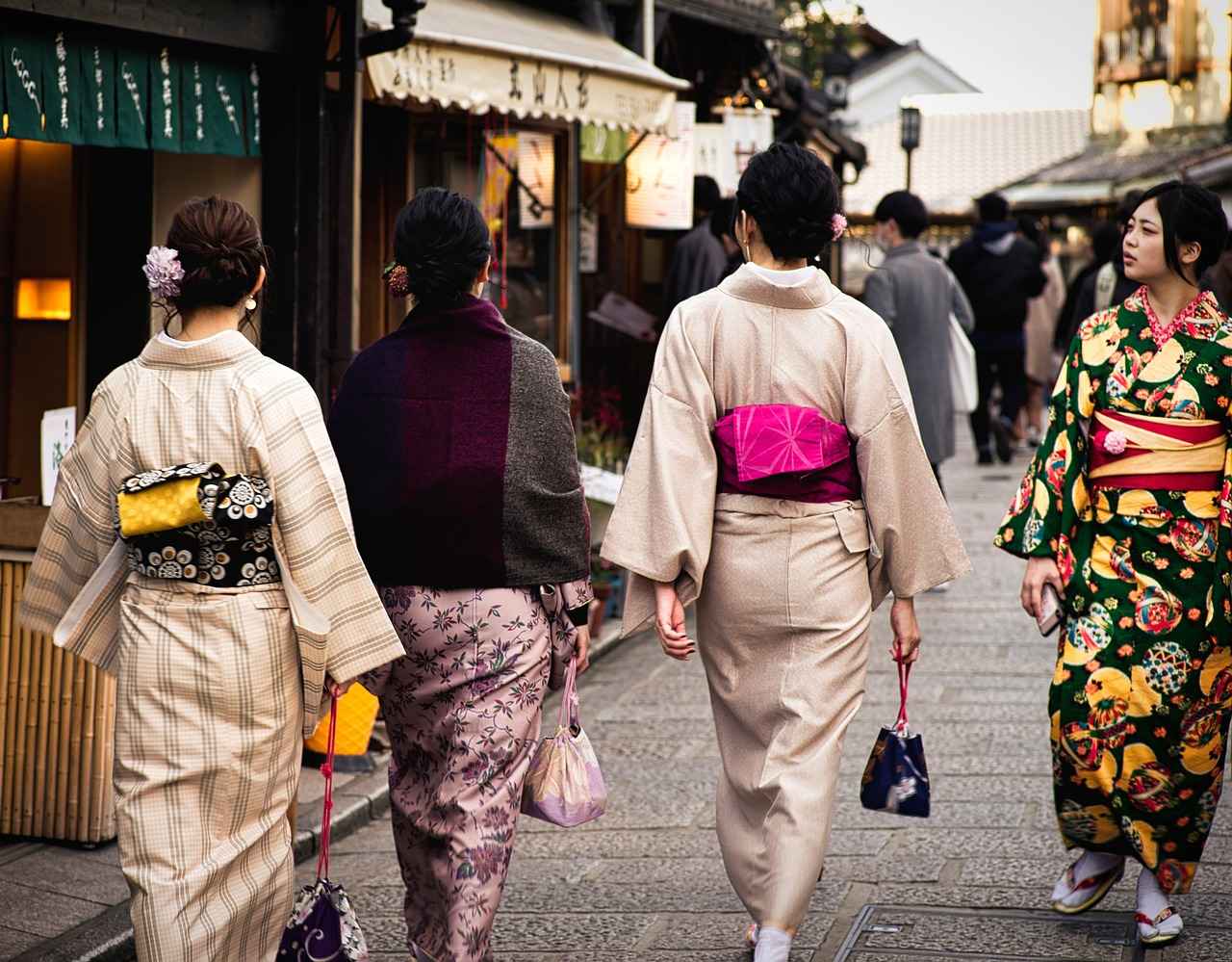
9. Cultural Significance of Kimonos
Understanding the cultural significance of kimonos is essential for anyone looking to appreciate these beautiful garments fully. Kimonos are not merely clothing; they are a representation of Japan’s rich history and cultural heritage. Each kimono tells a story through its colors, patterns, and styles, reflecting the wearer’s personality, social status, and the occasion for which it is worn.
The history of kimonos dates back to the Heian period (794-1185), where they were originally worn by the aristocracy. Over the centuries, kimonos have evolved, with various styles emerging to suit different occasions, from formal ceremonies to everyday wear. For instance, the furisode, characterized by its long sleeves, is typically worn by young unmarried women during special events, symbolizing youth and elegance.
Patterns and motifs on kimonos are rich in symbolism. For example, the crane represents longevity and good fortune, while the cherry blossom signifies the transient nature of life. Understanding these meanings enhances the experience of wearing a kimono, allowing individuals to connect more deeply with the garment and its cultural roots.
Moreover, the colors used in kimonos often carry specific meanings. Bright colors like red are associated with happiness and good luck, while subdued tones may indicate mourning or formality. This color symbolism is crucial for selecting the appropriate kimono for various events, ensuring that the wearer conveys the intended message.
In conclusion, exploring the cultural significance of kimonos not only enriches the wearing experience but also fosters a greater appreciation for Japanese culture. By understanding the history, symbolism, and styles of kimonos, individuals can wear them with pride, honoring the traditions they represent.
9.1. Symbolism of Colors
Colors in kimonos hold significant meanings and are deeply rooted in Japanese culture. Each hue conveys different emotions and symbolizes various occasions, making the choice of color an essential aspect when selecting a kimono.
For instance, red is often associated with happiness and good fortune, making it a popular choice for celebrations like weddings and festivals. It is believed to ward off evil spirits, which adds to its popularity during auspicious events.
On the other hand, white symbolizes purity and innocence. It is commonly worn during formal ceremonies, including weddings, but can also be seen at funerals, where it signifies mourning and respect for the deceased.
Blue represents calmness and serenity. It is often chosen for casual outings or summer events, as it evokes feelings of tranquility and relaxation. This color is ideal for those looking to convey a peaceful demeanor at social gatherings.
Another significant color is black, which is traditionally associated with elegance and formality. While it is often worn at formal events, it can also represent mourning in certain contexts. Thus, the wearer must consider the occasion when opting for a black kimono.
Furthermore, green symbolizes nature and growth. It is often worn during spring and summer events, reflecting the beauty of the changing seasons and the renewal of life.
In conclusion, understanding the symbolism of colors in kimonos not only enriches the wearing experience but also allows individuals to express their emotions and intentions more profoundly. By choosing the right color for the right occasion, one can honor tradition while making a personal statement.
9.2. Patterns and Motifs
Patterns and motifs play a crucial role in the cultural significance of kimonos, each telling a unique story that reflects the rich heritage of Japan. These intricate designs are not merely decorative; they embody deep meanings and traditions that have been passed down through generations.
One of the most popular motifs is the cherry blossom (sakura), symbolizing the fleeting nature of life. This motif is particularly prevalent during spring, celebrating the beauty of renewal and the transient moments that define existence. Another significant pattern is the crane, often associated with longevity and good fortune. The crane’s elegant form represents peace and fidelity, making it a favored choice for celebratory occasions.
Additionally, the wave (seigaiha) motif signifies the ebb and flow of life, embodying resilience and adaptability. This pattern is often chosen for its calming aesthetic, evoking a sense of tranquility. On the other hand, the peony is celebrated for its association with wealth and prosperity, often used in formal kimonos to convey a message of affluence and status.
Furthermore, the hexagonal (asanoha) pattern, representing growth and good luck, is a common choice for children’s kimonos, symbolizing a wish for a bright future. Each of these motifs carries a story, making the kimono not just a garment but a tapestry of cultural narratives.
In contemporary fashion, these traditional patterns have been reinterpreted, blending modern aesthetics with historical significance. Designers often experiment with colors and styles, ensuring that the essence of these motifs remains while appealing to a broader audience.
In conclusion, understanding the patterns and motifs of kimonos enriches the experience of wearing them. Each design serves as a reminder of Japan’s cultural heritage, allowing wearers to connect with the stories and meanings that have shaped this beautiful garment.

10. Seasonal Kimono Trends
Like all fashion, kimono trends evolve with the seasons, reflecting changes in style, fabric, and color palettes. Understanding these seasonal trends can help you adapt your kimono wardrobe to stay stylish and relevant. Here, we highlight the latest seasonal trends and provide insights on how to seamlessly incorporate them into your outfits.
10.1. Spring and Summer Styles
As the weather warms up, kimono styles often embrace lighter fabrics and vibrant colors. Spring and summer kimonos typically feature floral patterns and pastel hues, perfect for outdoor gatherings and celebrations. Popular choices include:
- Lightweight Cotton: Ideal for breathability and comfort.
- Bright Colors: Embrace shades like pink, yellow, and blue to reflect the season’s energy.
- Short Kimonos: These can be paired effortlessly with shorts or dresses for a chic look.
10.2. Fall and Winter Styles
As temperatures drop, kimonos can be layered for warmth without sacrificing style. Fall and winter kimonos often feature richer colors and heavier fabrics. Key trends include:
- Layering Techniques: Use long-sleeve kimonos over turtlenecks or fitted tops for added warmth.
- Earthy Tones: Colors like deep green, burgundy, and navy are popular, reflecting the autumn landscape.
- Textured Fabrics: Consider kimonos made from wool blends or heavier cotton for cozy comfort.
To adapt your kimono wardrobe effectively, pay attention to the latest trends and choose styles that resonate with your personal aesthetic. Whether you’re dressing for a summer festival or a winter gathering, kimonos offer a versatile and elegant option for any occasion.
10.1. Spring and Summer Styles
Spring and Summer Styles are the perfect opportunity to embrace the vibrant colors and lighter fabrics of kimonos. As the weather warms up, these traditional garments transition beautifully into modern fashion, allowing wearers to express their individuality while staying comfortable.
During the spring and summer months, kimonos made from lightweight materials such as cotton, linen, and chiffon become increasingly popular. These fabrics not only provide breathability but also drape elegantly, making them ideal for warmer weather. Bright colors and floral patterns are frequently seen, reflecting the lively spirit of the seasons.
- Floral Prints: These are a staple for spring and summer kimonos, bringing a touch of nature’s beauty to your outfit.
- Pastel Shades: Soft colors like mint green, blush pink, and baby blue are trendy choices that evoke a sense of calm and freshness.
- Bold Patterns: Geometric designs and vibrant hues can make a statement, perfect for those who want to stand out in a crowd.
When selecting a kimono for warmer weather, consider the length and style. Long kimonos can be paired with shorts or fitted jeans for a chic look, while shorter styles are great for layering over dresses or tank tops. Accessorizing is key; pairing your kimono with a simple belt can help define your waist, while adding a wide-brimmed hat can elevate your ensemble.
Additionally, lightweight kimonos can easily transition from day to night. For a casual daytime look, wear your kimono over a tank top and shorts. For evening events, simply swap your casual attire for a sleek dress and add statement jewelry to create a more polished appearance.
In conclusion, spring and summer kimonos offer a fantastic way to stay stylish and comfortable during the warmer months. By choosing the right fabrics, colors, and accessories, you can create versatile outfits that celebrate both tradition and modern fashion.
10.2. Fall and Winter Styles
Fall and Winter Styles are an excellent opportunity to showcase the versatility of kimonos while staying warm and stylish. As the temperatures drop, layering becomes essential, and kimonos can be the perfect outerwear piece for the cooler months. This section explores how to effectively layer kimonos and incorporate cozy accessories to create chic outfits that keep you comfortable.
- Layering Techniques: Start with a base layer such as a fitted turtleneck or a long-sleeve shirt. Choose a kimono that complements your base layer in color and pattern. For added warmth, consider a thicker fabric kimono, such as one made from wool or heavier cotton.
- Cozy Accessories: Accessories play a crucial role in styling kimonos for fall and winter. Opt for scarves, hats, and gloves that not only add warmth but also enhance your overall look. A chunky knit scarf can add texture and visual interest to your outfit.
- Footwear Choices: Pair your kimono with stylish yet comfortable footwear. Ankle boots or knee-high boots are excellent options that provide warmth and style. Choose boots that complement the color palette of your kimono for a cohesive look.
- Layering with Outerwear: For extremely cold days, consider layering your kimono under a tailored coat or a long cardigan. This combination not only keeps you warm but also adds depth to your outfit.
When styling kimonos for fall and winter, it’s essential to choose pieces that reflect your personal style while ensuring comfort. Experiment with different textures and colors to create unique looks that stand out during the colder months. Remember, the key is to balance warmth with elegance.
In conclusion, incorporating kimonos into your fall and winter wardrobe can be both practical and fashionable. With the right layering techniques and accessories, you can stay warm while expressing your unique style. Embrace the beauty of kimonos this season!
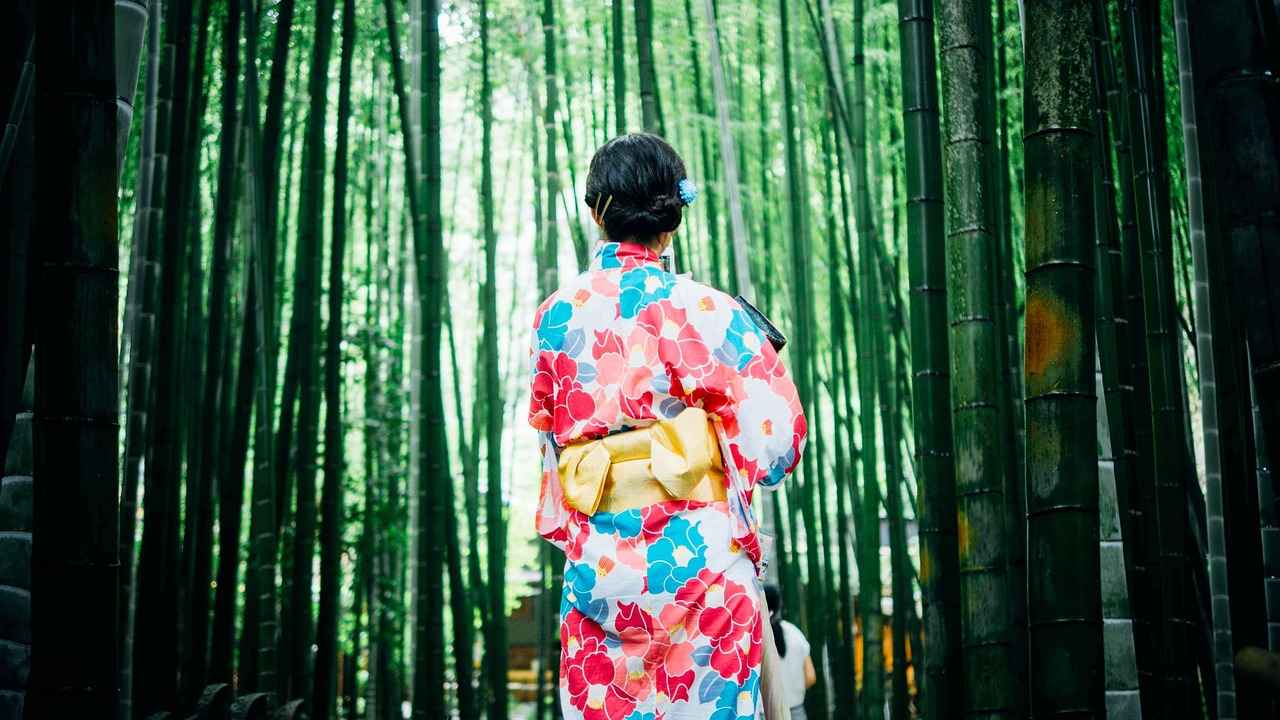
11. DIY Kimono Ideas
For those with a creative spirit, crafting your own kimono can be an immensely fulfilling endeavor. This section offers a variety of DIY ideas and essential tips for creating personalized kimonos that reflect your unique style and taste.
When embarking on your kimono-making journey, it’s important to consider a few key elements:
- Design Inspiration: Look for inspiration in traditional Japanese kimonos, modern fashion trends, or even your favorite colors and patterns. Pinterest and Instagram are great platforms to explore various styles.
- Choosing the Right Fabric: The fabric you select will greatly influence the look and feel of your kimono. Popular choices include silk for a luxurious touch, cotton for comfort, or even lightweight blends for a more casual look.
- Measurements: Accurate measurements are crucial. Take your body measurements to ensure a comfortable fit. Remember that kimonos are typically designed to be loose-fitting.
Basic Sewing Techniques: If you’re new to sewing, don’t worry! Here are some fundamental techniques to get you started:
1. **Cutting the Fabric**: Use sharp fabric scissors to cut your chosen material according to your design.2. **Sewing Seams**: Familiarize yourself with basic stitching techniques, such as straight and zigzag stitches.3. **Hemming**: Finish the edges of your kimono to prevent fraying. A simple double fold hem works well.4. **Adding Details**: Consider embellishments like embroidery or decorative stitching to personalize your kimono further.
Once your kimono is assembled, it’s time to style it! Pair your creation with a beautiful obi belt and accessories that complement your look. Don’t forget to experiment with different footwear options to complete your outfit.
In conclusion, making your own kimono is not only a fun and creative project but also a way to connect with a rich cultural tradition. With the right materials and techniques, you can craft a stunning garment that showcases your personal style.
11.1. Choosing the Right Fabric
Choosing the Right Fabric for your DIY kimono is a fundamental step that influences both the comfort and style of your garment. Selecting the appropriate material can enhance the overall aesthetic and ensure that your creation is not only visually appealing but also practical for wear.
When considering fabric options, it’s essential to think about the occasion for which the kimono will be worn. Different fabrics serve various purposes:
- Silk: Known for its luxurious feel and elegant drape, silk is an excellent choice for formal events. However, it requires careful handling and maintenance.
- Cotton: A versatile and breathable option, cotton kimonos are perfect for casual outings or warm weather. They are easy to wash and maintain, making them a practical choice.
- Rayon: This fabric mimics the feel of silk but is more affordable. Rayon kimonos offer a lovely drape and are suitable for both casual and semi-formal occasions.
- Polyester: A synthetic option that is durable and easy to care for. Polyester kimonos can be styled for various occasions, though they may not offer the same breathability as natural fibers.
Comfort is also a crucial consideration. Fabrics like cotton and rayon allow for better airflow, making them ideal for warmer climates. In contrast, silk offers warmth and elegance, perfect for cooler evenings.
Additionally, think about the color and pattern of the fabric. Bright colors and bold patterns can make a statement, while softer tones and subtle designs might be more suitable for understated elegance. Always consider how the fabric will complement your personal style and the accessories you plan to wear.
In summary, selecting the right fabric for your DIY kimono is vital for achieving the desired look and comfort. By understanding the characteristics of various materials, you can make an informed choice that enhances your overall outfit.
11.2. Basic Sewing Techniques
Basic sewing techniques are essential for anyone looking to create their own kimono. This process not only allows for personalization but also provides an opportunity to learn a valuable skill. In this section, we will explore the fundamental techniques and steps needed to craft a beautiful kimono from scratch.
Before you start sewing, it is crucial to gather the right materials. You will need:
- Fabric: Choose a lightweight fabric such as cotton or silk, depending on the occasion.
- Thread: Select a thread that matches your fabric for a seamless look.
- Sewing Machine: A basic sewing machine will suffice for most kimono projects.
- Tools: Scissors, pins, and a measuring tape are essential for accurate cutting and assembly.
Once you have your materials, follow these steps:
- Measure and Cut: Start by taking accurate measurements of your body. Use these measurements to cut your fabric into the necessary pieces for the kimono.
- Pinning: Lay out the fabric pieces and pin them together. This helps to keep everything in place while you sew.
- Sewing Seams: Begin by sewing the main seams of the kimono. Use a straight stitch for a clean finish and ensure that your seams are even.
- Finishing Edges: To prevent fraying, finish the edges of your fabric with a zigzag stitch or a serger.
- Adding Details: Consider adding details such as pockets or decorative stitching to enhance the design of your kimono.
Finally, always remember to iron your kimono after sewing. This will give it a polished and professional look, making it ready for any occasion.
By mastering these basic sewing techniques, you can create a unique kimono that reflects your personal style and creativity.

12. Conclusion: Embracing the Kimono Tradition
Conclusion: Embracing the Kimono Tradition
Kimonos represent a stunning fusion of tradition and modernity. These unique garments not only showcase the rich cultural heritage of Japan but also adapt beautifully to contemporary fashion trends. By understanding the significance of kimonos, you can confidently incorporate them into your wardrobe, making them a versatile option for any celebration.
When selecting a kimono, consider the occasion and your personal style. Whether it’s a formal event, a casual gathering, or even a themed party, there are countless ways to wear a kimono that will reflect your individuality while respecting its cultural roots. Different styles, fabrics, and accessories can transform a simple outfit into something truly spectacular.
| Kimono Style | Best For | Fabric Recommendations |
|---|---|---|
| Long Kimono | Formal Events | Silk, Satin |
| Short Kimono | Casual Outings | Cotton, Linen |
| Layered Kimono | Fall/Winter Wear | Wool, Blends |
Accessorizing your kimono is equally important. A well-chosen obi belt can enhance your silhouette, while the right footwear can tie your entire look together. Consider incorporating contemporary accessories to blend traditional aesthetics with modern flair.
- Choose colors that resonate with the occasion.
- Experiment with patterns that reflect your personality.
- Layer with modern clothing for a trendy touch.
In conclusion, embracing the kimono tradition allows you to celebrate its beauty and history while making it your own. With the right knowledge and styling tips, you can confidently wear a kimono for any celebration, honoring its legacy while showcasing your unique style.
Frequently Asked Questions
- What is a kimono?
A kimono is a traditional Japanese garment characterized by its long sleeves and wrap-around design. It’s often made from luxurious fabrics and is worn on various occasions, blending elegance with cultural significance.
- How do I choose the right kimono for a party?
When selecting a kimono for a party, consider the event’s formality, your body type, and the season. Opt for silk for formal events and cotton for casual gatherings. Don’t forget to accessorize with a stylish obi belt!
- Can I wear a kimono for everyday occasions?
Absolutely! Kimonos can be styled for casual wear by pairing them with jeans, shorts, or simple tops. They add a unique flair to your everyday outfits, making them versatile and fun!
- What accessories should I wear with my kimono?
Accessories like obi belts, traditional sandals, and statement jewelry can enhance your kimono outfit. Choose items that complement your kimono’s color and style for a cohesive look.
- How do I care for my silk kimono?
Caring for silk kimonos involves gentle washing, preferably by hand, and avoiding direct sunlight when drying. Store them in a cool, dry place to maintain their beauty and longevity.
